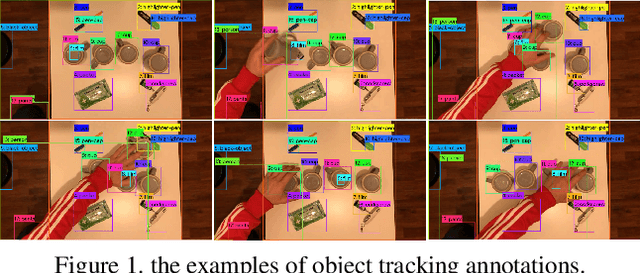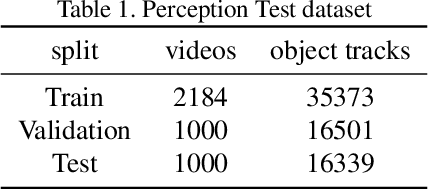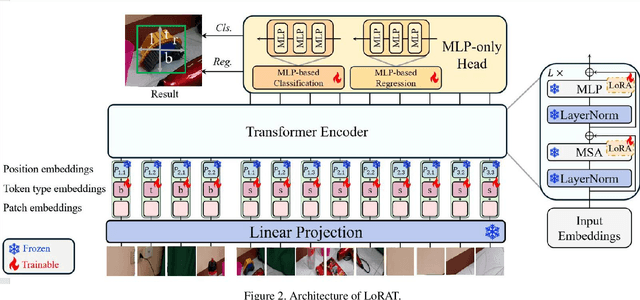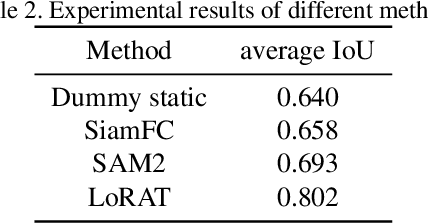Henglu Wei
The Solution for Single Object Tracking Task of Perception Test Challenge 2024
Oct 19, 2024



Abstract:This report presents our method for Single Object Tracking (SOT), which aims to track a specified object throughout a video sequence. We employ the LoRAT method. The essence of the work lies in adapting LoRA, a technique that fine-tunes a small subset of model parameters without adding inference latency, to the domain of visual tracking. We train our model using the extensive LaSOT and GOT-10k datasets, which provide a solid foundation for robust performance. Additionally, we implement the alpha-refine technique for post-processing the bounding box outputs. Although the alpha-refine method does not yield the anticipated results, our overall approach achieves a score of 0.813, securing first place in the competition.
Efficient Personalized Text-to-image Generation by Leveraging Textual Subspace
Jun 30, 2024Abstract:Personalized text-to-image generation has attracted unprecedented attention in the recent few years due to its unique capability of generating highly-personalized images via using the input concept dataset and novel textual prompt. However, previous methods solely focus on the performance of the reconstruction task, degrading its ability to combine with different textual prompt. Besides, optimizing in the high-dimensional embedding space usually leads to unnecessary time-consuming training process and slow convergence. To address these issues, we propose an efficient method to explore the target embedding in a textual subspace, drawing inspiration from the self-expressiveness property. Additionally, we propose an efficient selection strategy for determining the basis vectors of the textual subspace. The experimental evaluations demonstrate that the learned embedding can not only faithfully reconstruct input image, but also significantly improves its alignment with novel input textual prompt. Furthermore, we observe that optimizing in the textual subspace leads to an significant improvement of the robustness to the initial word, relaxing the constraint that requires users to input the most relevant initial word. Our method opens the door to more efficient representation learning for personalized text-to-image generation.
SynFog: A Photo-realistic Synthetic Fog Dataset based on End-to-end Imaging Simulation for Advancing Real-World Defogging in Autonomous Driving
Mar 25, 2024Abstract:To advance research in learning-based defogging algorithms, various synthetic fog datasets have been developed. However, existing datasets created using the Atmospheric Scattering Model (ASM) or real-time rendering engines often struggle to produce photo-realistic foggy images that accurately mimic the actual imaging process. This limitation hinders the effective generalization of models from synthetic to real data. In this paper, we introduce an end-to-end simulation pipeline designed to generate photo-realistic foggy images. This pipeline comprehensively considers the entire physically-based foggy scene imaging process, closely aligning with real-world image capture methods. Based on this pipeline, we present a new synthetic fog dataset named SynFog, which features both sky light and active lighting conditions, as well as three levels of fog density. Experimental results demonstrate that models trained on SynFog exhibit superior performance in visual perception and detection accuracy compared to others when applied to real-world foggy images.
 Add to Chrome
Add to Chrome Add to Firefox
Add to Firefox Add to Edge
Add to Edge